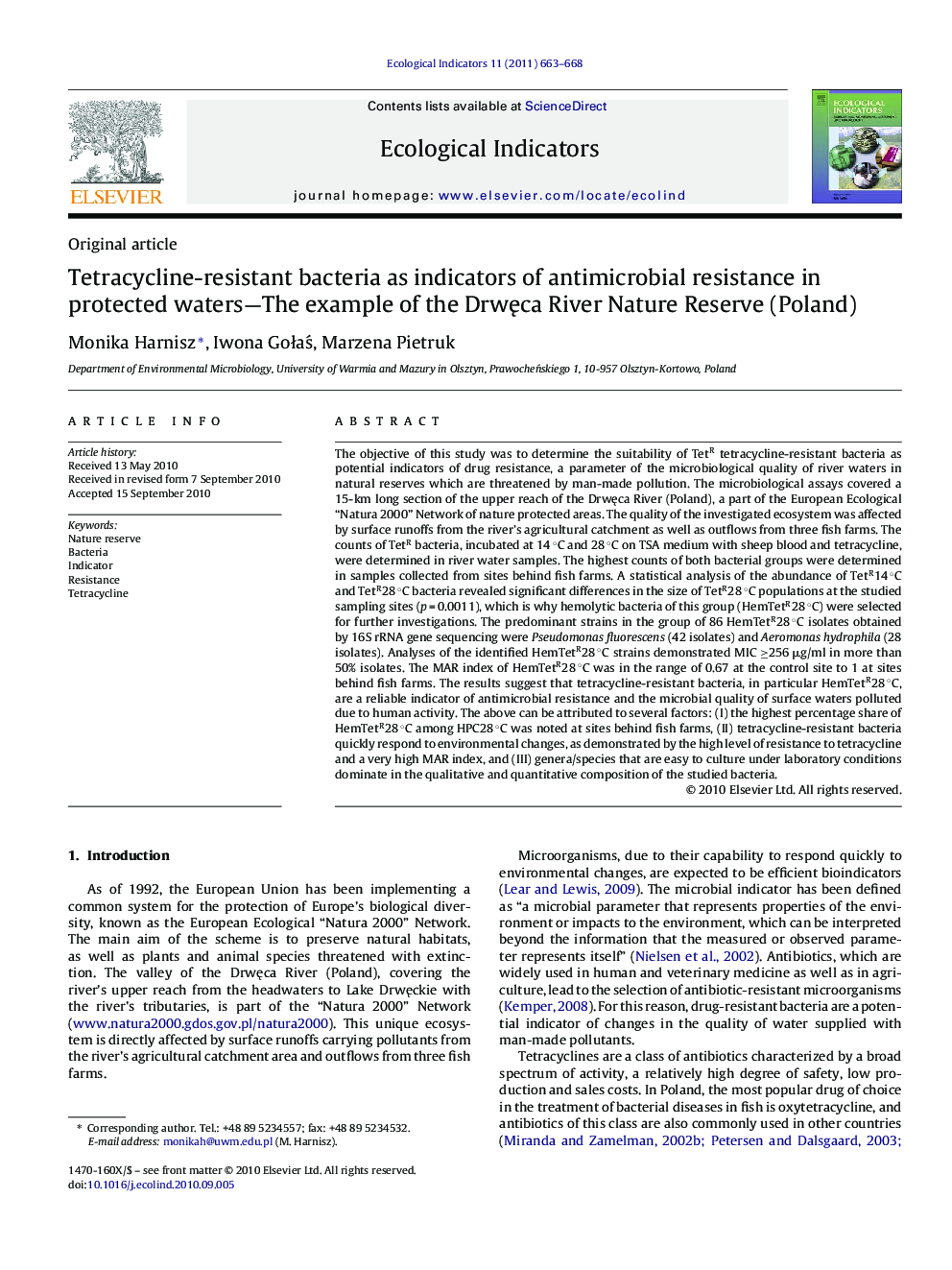| Article ID | Journal | Published Year | Pages | File Type |
|---|---|---|---|---|
| 4374144 | Ecological Indicators | 2011 | 6 Pages |
Abstract
The objective of this study was to determine the suitability of TetR tetracycline-resistant bacteria as potential indicators of drug resistance, a parameter of the microbiological quality of river waters in natural reserves which are threatened by man-made pollution. The microbiological assays covered a 15-km long section of the upper reach of the DrwÄca River (Poland), a part of the European Ecological “Natura 2000” Network of nature protected areas. The quality of the investigated ecosystem was affected by surface runoffs from the river's agricultural catchment as well as outflows from three fish farms. The counts of TetR bacteria, incubated at 14 °C and 28 °C on TSA medium with sheep blood and tetracycline, were determined in river water samples. The highest counts of both bacterial groups were determined in samples collected from sites behind fish farms. A statistical analysis of the abundance of TetR14 °C and TetR28 °C bacteria revealed significant differences in the size of TetR28 °C populations at the studied sampling sites (p = 0.0011), which is why hemolytic bacteria of this group (HemTetR28 °C) were selected for further investigations. The predominant strains in the group of 86 HemTetR28 °C isolates obtained by 16S rRNA gene sequencing were Pseudomonas fluorescens (42 isolates) and Aeromonas hydrophila (28 isolates). Analyses of the identified HemTetR28 °C strains demonstrated MIC â¥256 μg/ml in more than 50% isolates. The MAR index of HemTetR28 °C was in the range of 0.67 at the control site to 1 at sites behind fish farms. The results suggest that tetracycline-resistant bacteria, in particular HemTetR28 °C, are a reliable indicator of antimicrobial resistance and the microbial quality of surface waters polluted due to human activity. The above can be attributed to several factors: (I) the highest percentage share of HemTetR28 °C among HPC28 °C was noted at sites behind fish farms, (II) tetracycline-resistant bacteria quickly respond to environmental changes, as demonstrated by the high level of resistance to tetracycline and a very high MAR index, and (III) genera/species that are easy to culture under laboratory conditions dominate in the qualitative and quantitative composition of the studied bacteria.
Related Topics
Life Sciences
Agricultural and Biological Sciences
Ecology, Evolution, Behavior and Systematics
Authors
Monika Harnisz, Iwona GoÅaÅ, Marzena Pietruk,
